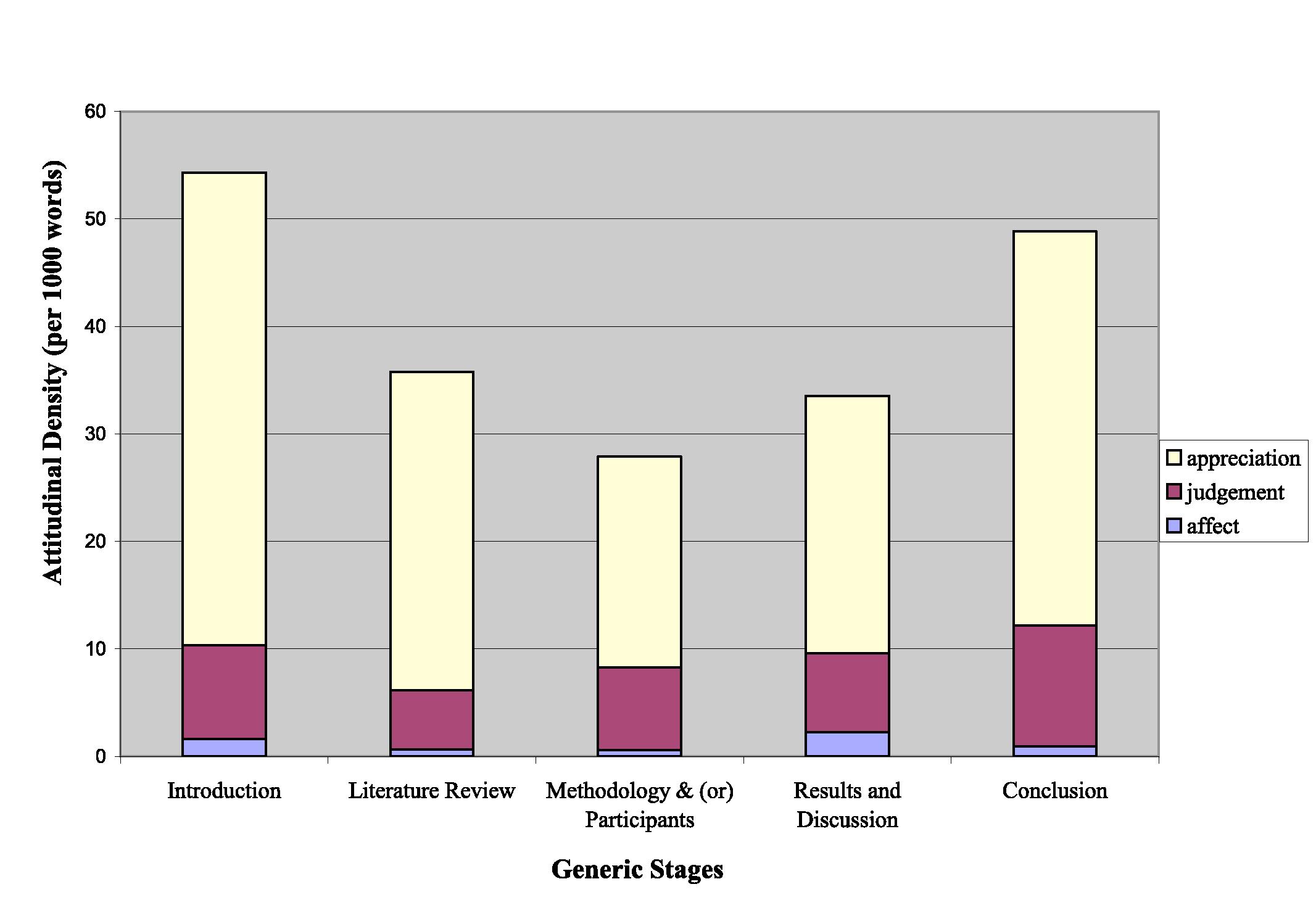Distribution of Evaluation
This section shows how the effective research papers (those which graded B+ or above) make careful use of the evaluative lexico-grammatical resources to make the rhetorical functions of the generic stages of the research papers explicit. In this part, we will show the overview of the attitudinal distribution in the research paper corpus; then we will look into each generic stage to see what kind of attitude is dominant and other features unique at each stage.
As seen from the table below, Appreciation values prevail the whole effective paper corpus, with scarce distribution of Affect and Judgement across the five generic stages:
| Introduction | Literature Review | Methodology &Participants |
Results & Discussion | Conclusion | ||||||
| Attitude | 205 | 54.3 | 274 | 35.77 | 91 | 27.88 | 614 | 33.54 | 481 | 48.82 |
| N | /1000 | N | /1000 | N | /1000 | N | /1000 | N | /1000 | |
| Affect | 6 | 1.59 | 3 | 0.39 | 2 | 0.61 | 41 | 2.24 | 8 | 0.81 |
| Judgement | 33 | 8.74 | 43 | 5.61 | 25 | 7.66 | 134 | 7.32 | 114 | 11.57 |
| Appreciation | 166 | 43.97 | 228 | 29.77 | 64 | 19.61 | 439 | 23.98 | 360 | 36.54 |
The attitudinal value distribution in the effective papers varies in a gradual manner across the stages, where the attitudinal density peaks at the Introduction stage, ebbs at the Methodology and Participants section, and steadily reaches another peak at the Conclusion stage. The following graph shows the dynamic flow of the attitudinal values across the stages.

Within the corpus, "effective" and "correct" are the two most frequent evaluative lexical items, which collocate with teaching approaches, strategies, assignments and outcomes. Below are the concordance lines showing the collocation patterns of "effective" and "correct" in the corpus:
| anka (Gibbons, 2002) is a more | effective | approach in terms o |
| e the modern major goal in any | effective | ELT courses is to d |
| and would be cheerless, unless | effective | measures or modific |
| ough the lesson was smooth and | effective | improvement has to |
| teaching and learning, but an | effective | writing assessment |
| assmates on the whiteboard are | correct | The teacher can also |
| or the group who gets the most | correct | translations. 3) The |
| dents are not able to give the | correct | answers. Then, the te |
| d to write sentences using the | correct | syntax formats by int |
| es. This is to demonstrate the | correct | use of grammar throug |
This identifies with the research assignment criteria, that is, to analyse pedagogical practice in the English classroom. Meanwhile, Judgement values are scant in the frequency list of the evaluative lexis, and Affect values are absent, showing that the effective student writers are capable of manipulating evaluative resources to critique strategically in their writing.
